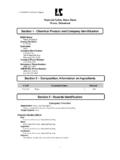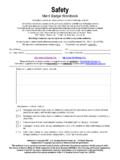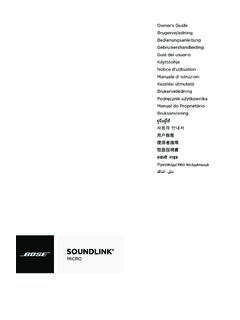Transcription of CHAPTER12 Electricity - NCERT
1 Electricity12 CHAPTERE lectricity has an important place in modern society. It is a controllableand convenient form of energy for a variety of uses in homes, schools,hospitals, industries and so on. What constitutes Electricity ? How doesit flow in an electric circuit ? What are the factors that control or regulatethe current through an electric circuit ? In this Chapter, we shall attemptto answer such questions. We shall also discuss the heating effect ofelectric current and its ELECTRIC CURRENT AND ELECTRIC CURRENT AND ELECTRIC CURRENT AND ELECTRIC CURRENT AND ELECTRIC CURRENT AND CIRCUITWe are familiar with air current and water current.
2 We know that flowingwater constitute water current in rivers. Similarly, if the electric chargeflows through a conductor (for example, through a metallic wire), wesay that there is an electric current in the conductor. In a torch, weknow that the cells (or a battery , when placed in proper order) provideflow of charges or an electric current through the torch bulb to glow. Wehave also seen that the torch gives light only when its switch is on. Whatdoes a switch do? A switch makes a conducting link between the cell andthe bulb. A continuous and closed path of an electric current is called anelectric circuit .
3 Now, if the circuit is broken anywhere (or the switch of thetorch is turned off), the current stops flowing and the bulb does not do we express electric current? Electric current is expressed bythe amount of charge flowing through a particular area in unit time. Inother words, it is the rate of flow of electric charges. In circuits usingmetallic wires, electrons constitute the flow of charges. However, electronswere not known at the time when the phenomenon of Electricity was firstobserved. So, electric current was considered to be the flow of positivecharges and the direction of flow of positive charges was taken to be thedirection of electric current.
4 Conventionally, in an electric circuit thedirection of electric current is taken as opposite to the direction of theflow of electrons, which are negative 22 Science200If a net charge Q, flows across any cross-section of a conductor intime t, then the current I, through the cross-section isIQt=( )The SI unit of electric charge is coulomb (C), which is equivalent tothe charge contained in nearly 6 1018 electrons. (We know that anelectron possesses a negative charge of 10 19 C.) The electriccurrent is expressed by a unit called ampere (A), named after theFrench scientist, Andre-Marie Ampere (1775 1836).
5 One ampere isconstituted by the flow of one coulomb of charge per second, that is,1 A = 1 C/1 s. Small quantities of current are expressed in milliampere(1 mA = 10 3 A) or in microampere (1 A = 10 6 A).An instrument called ammeter measures electriccurrent in a circuit . It is always connected in seriesin a circuit through which the current is to bemeasured. Figure shows the schematicdiagram of a typical electric circuit comprising acell, an electric bulb, an ammeter and a plug that the electric current flows in the circuitfrom the positive terminal of the cell to the negativeterminal of the cell through the bulb and schematic diagram of an electric circuitcomprising cell, electric bulb, ammeter andplug keyQUESTIONS?
6 Example current of A is drawn by a filament of an electric bulb for 10minutes. Find the amount of electric charge that flows through are given, I = A; t = 10 min = 600 Eq. ( ), we haveQ=It= A 600 s= 300 does an electric circuit mean? the unit of the number of electrons constituting one coulomb of ELECTRIC POTENTIAL AND POTENTIAL ELECTRIC POTENTIAL AND POTENTIAL ELECTRIC POTENTIAL AND POTENTIAL ELECTRIC POTENTIAL AND POTENTIAL ELECTRIC POTENTIAL AND POTENTIAL DIFFERENCEWhat makes the electric charge to flow?
7 Let us consider the analogy offlow of water. Charges do not flow in a copper wire by themselves, just aswater in a perfectly horizontal tube does not flow. If one end of the tubeis connected to a tank of water kept at a higher level, such that there is apressure difference between the two ends of the tube, water flows out ofthe other end of the tube. For flow of charges in a conducting metallicwire, the gravity, of course, has no role to play; the electrons move onlyif there is a difference of electric pressure called the potential difference along the conductor.
8 This difference of potential may be produced by abattery, consisting of one or more electric cells. The chemical action withina cell generates the potential difference across the terminals of the cell,even when no current is drawn from it. When the cell is connected to aconducting circuit element, the potential difference sets the charges inmotion in the conductor and produces an electric current. In order tomaintain the current in a given electric circuit , the cell has to expend itschemical energy stored in define the electric potential difference between two points in anelectric circuit carrying some current as the work done to move a unitcharge from one point to the other Potential difference (V) between two points = Work done (W)/Charge (Q)V=W/Q( )The SI unit of electric potential difference is volt (V), named afterAlessandro Volta (1745 1827), an Italian physicist.
9 One volt is the Flow of charges inside a wireHow does a metal conduct Electricity ? You would think that a low-energy electronwould have great difficulty passing through a solid conductor. Inside the solid, theatoms are packed together with very little spacing between them. But it turns outthat the electrons are able to travel through a perfect solid crystal smoothly andeasily, almost as if they were in a vacuum. The motion of electrons in a conductor,however, is very different from that of charges in empty space. When a steady currentflows through a conductor, the electrons in it move with a certain average drift speed.
10 One can calculate this drift speed of electrons for a typical copper wire carrying asmall current, and it is found to be actually very small, of the order of 1 mm s-1. Howis it then that an electric bulb lights up as soon as we turn the switch on? It cannot bethat a current starts only when an electron from one terminal of the electric supplyphysically reaches the other terminal through the bulb, because the physical drift ofelectrons in the conducting wires is a very slow process. The exact mechanism of thecurrent flow, which takes place with a speed close to the speed of light, is fascinating,but it is beyond the scope of this book.












